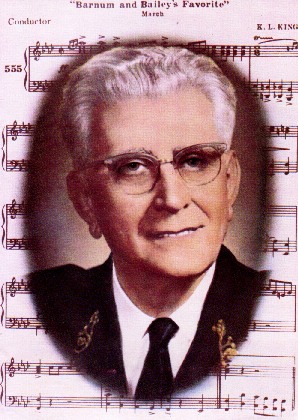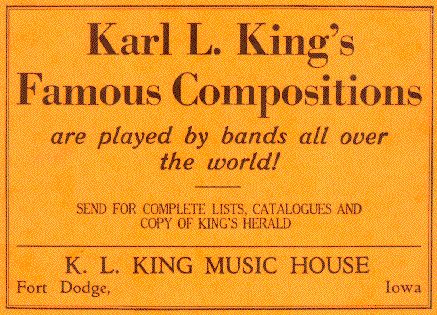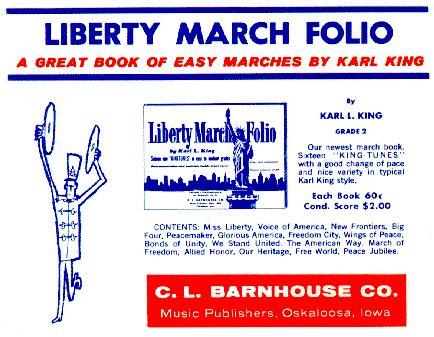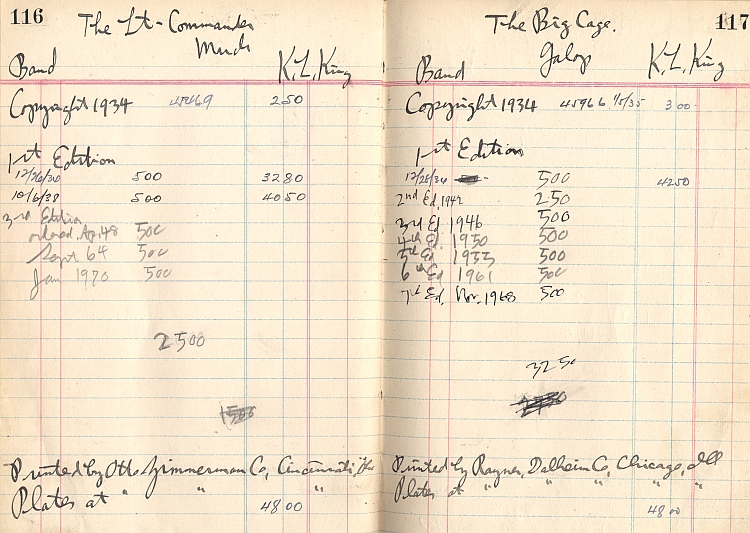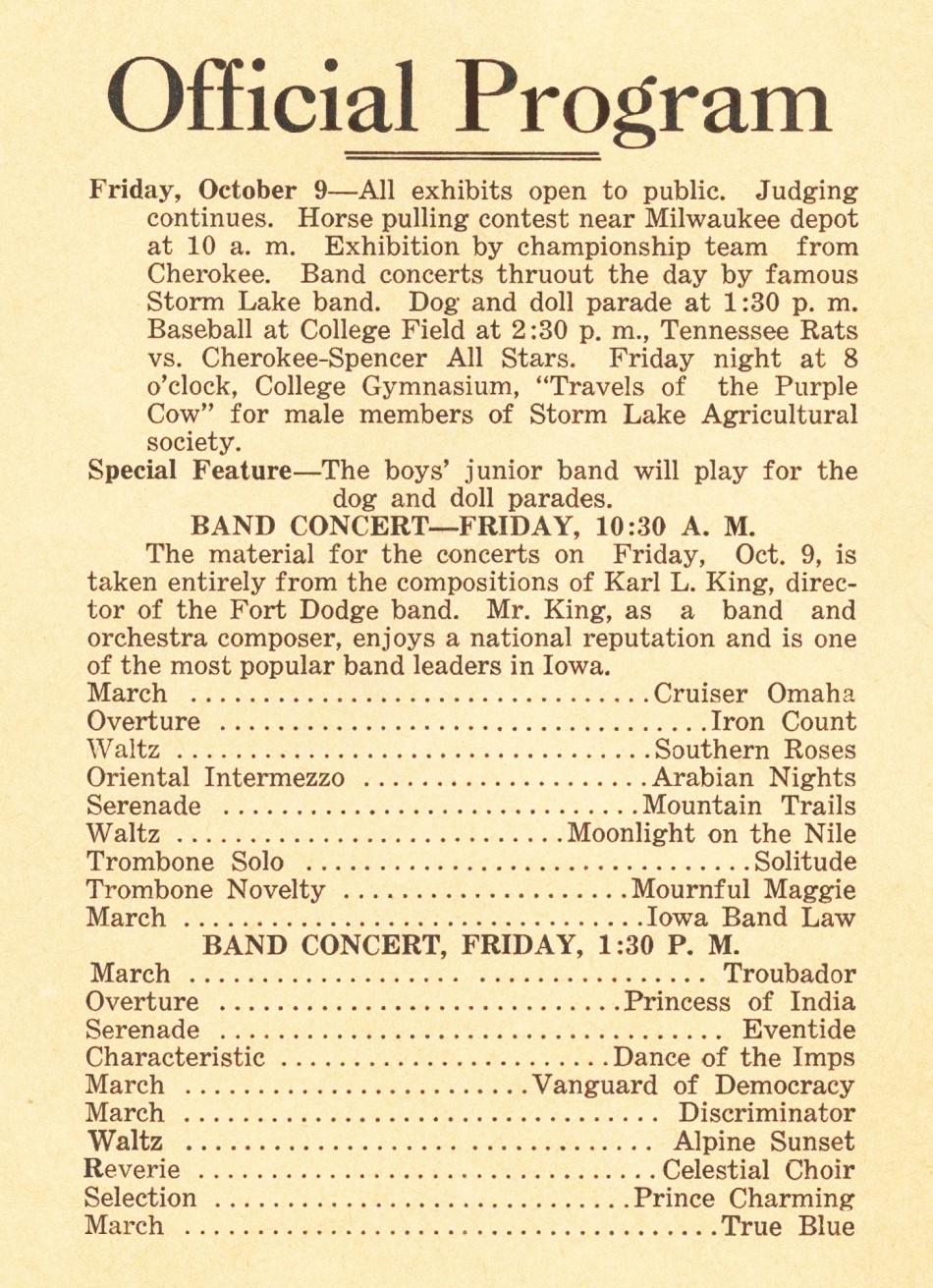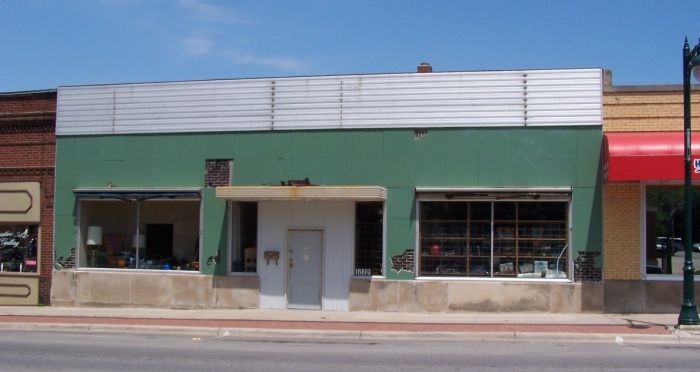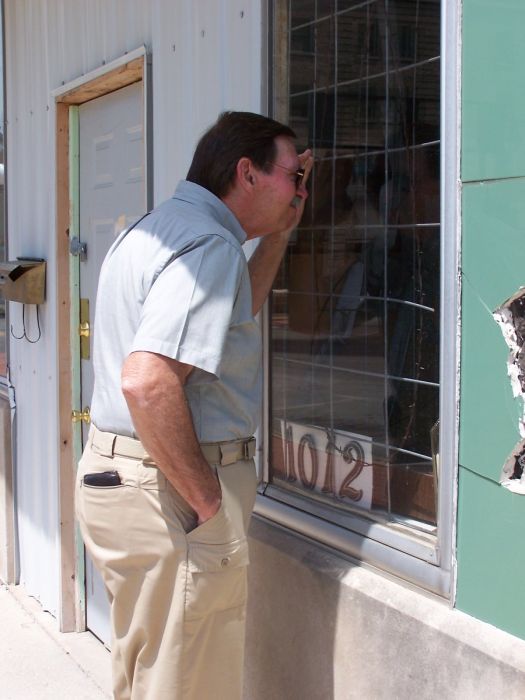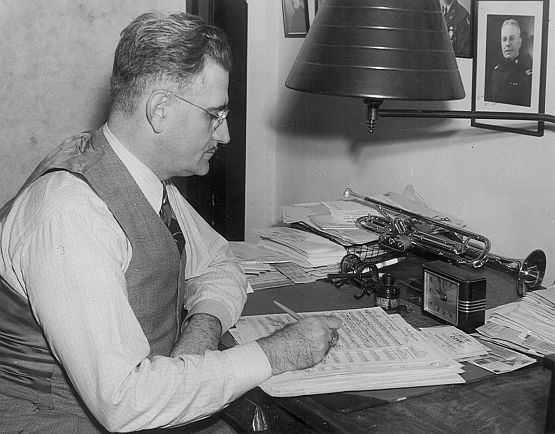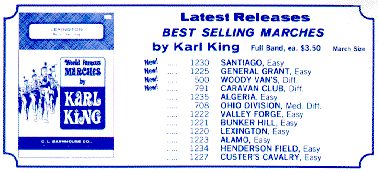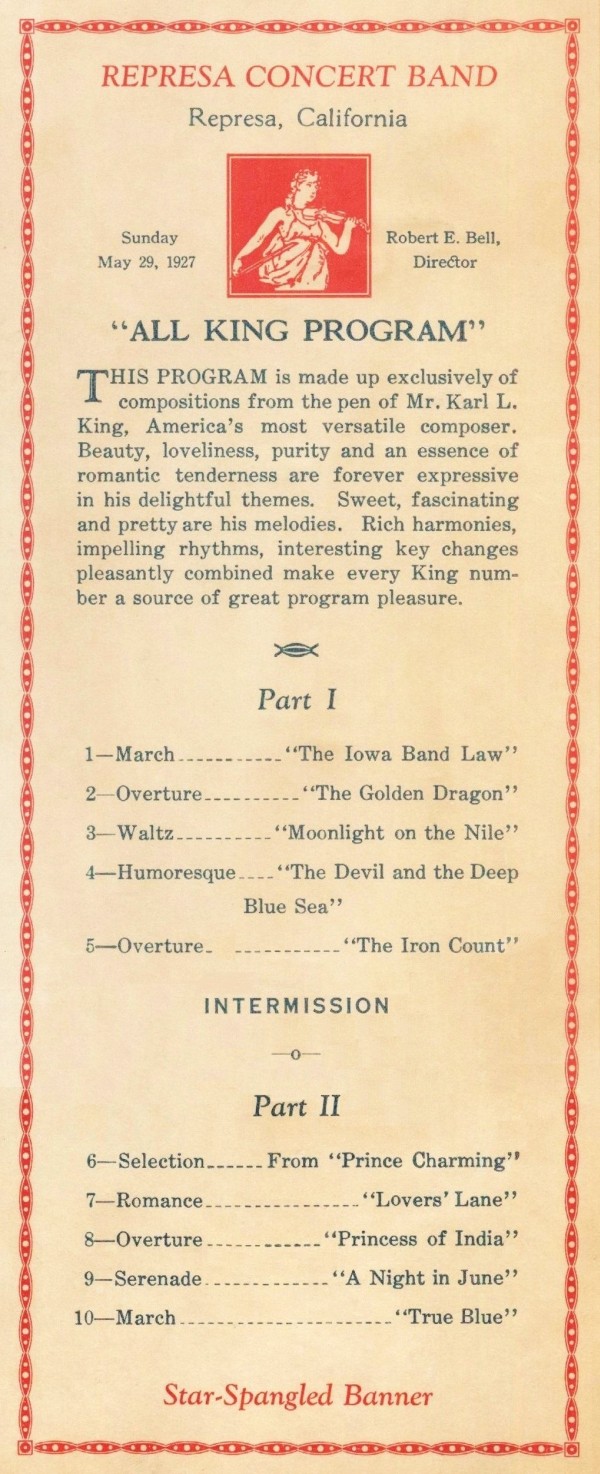
|
Bands known to play concerts
containing only Karl King music
Represa Concert Band, California
Storm Lake, Iowa
Palmetto State Band
Viborg Concert Band
Cuba Concert Band
25th Infantry Band, Nogales, Arizona
Trinidad Concert Band
Patrick Conway and His Band
Emerson-Hiltbruknner Lakes Band
John Jenny, Cedar Rapids, Iowa
Storm Lake & Newell
Perry Municipal Band
Pipestone, Minnesota
Ames Municipal Band
Hartley Municipal Band
Geneva, Nebraska
Negaunee City Concert Band
Flandreau, Minnesota
Mechanicsville, Iowa
State Reformatory Band
Salina Municipal Band
U. S. Indian School Band, Phoenix, Arizona
Westerville Band, Ohio
140 infantry Band, Chaffee, Missouri
Lincoln Hall Band - University of Nevada
3rd Infantry Band
Valley High School Band, Des Moines, Iowa
Oklahoma State Prison Band
Huron Municipal Band
Senath Lions Band, Blytheville, Mo.
United States Army Band
Monahan Post Band
Belleville and Cuba Bands
Community Band, Harry Crigler, director
Kansas League of Muni. Bands Convention
Ord Band, Albany, Mo.
Scribner Municipal Band
New London Municipal Band
Clarinda Band honors Mr. Landers
Belmond Band
Lincoln Boys Civic Club
Putman Band of Fargo
Alzafar Shrine Band & Drum Corps
Staples City Band
Wheatland Municipal Band
Kable Bros. Co. 129th Infantry Band
Mounty Morris, Illinois |
